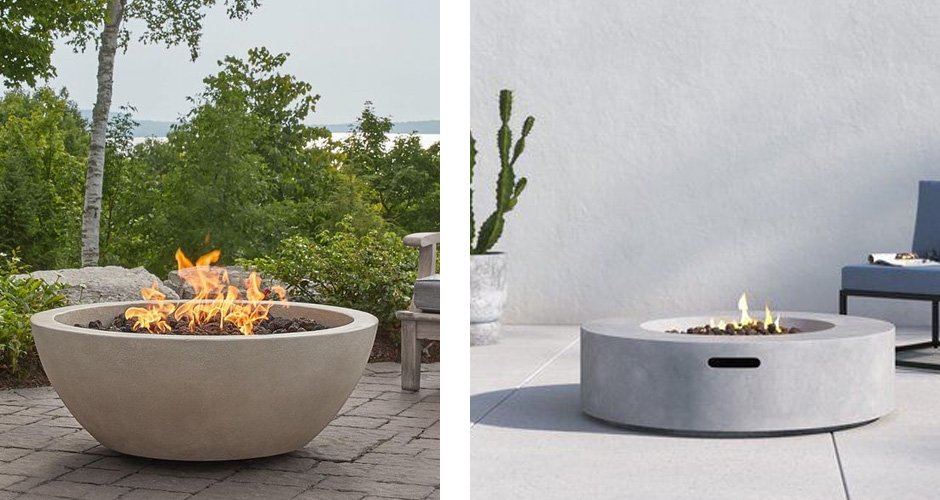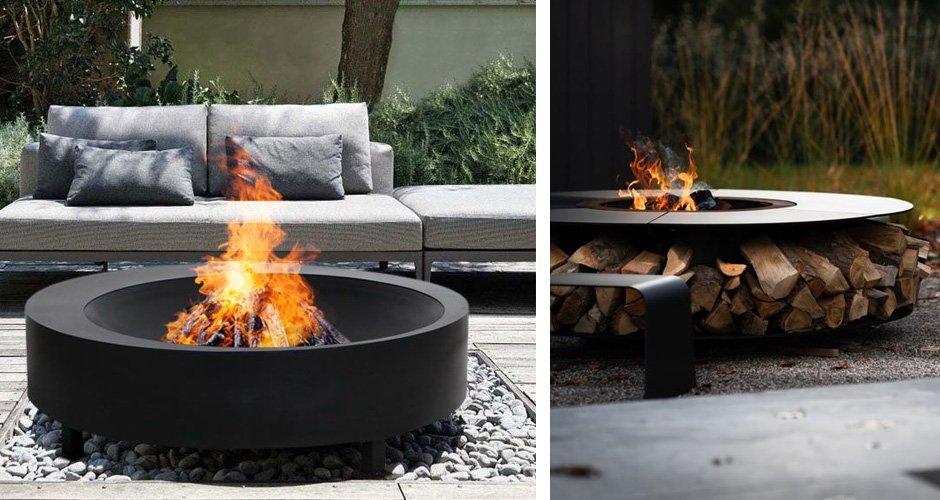A Warm Embrace: How to Choose the Best Fire Pit for Your Garden
A fire pit can be the heart of your garden, providing warmth, ambience and a focal point for outdoor gatherings. Now that fall is coming up us; a firepit can extend your time in the garden and allow you to enjoy the evenings without the chill.
Whether you're seeking a cozy spot for family conversations or a place to entertain guests on cool evenings, selecting the right fire pit is crucial. In this guide, we'll walk you through the essential factors to consider when choosing the best fire pit for your garden.
Determine Your Garden's Size and Layout:
Before shopping for a fire pit, assess your garden's size and layout. Measure the available space to ensure your chosen fire pit fits comfortably and complies with local regulations and safety codes. Consider the proximity to your home, seating areas, and any nearby structures or trees. A well-placed fire pit should enhance the overall aesthetics of your garden.
Note: In the US, the regulations governing fire pits and outdoor fireplaces can vary significantly depending on local and state ordinances. These regulations typically focus on factors such as the size and location of the fire pit, the type of fuel used (wood, propane, natural gas), clearance distances from structures and combustibles, and specific safety features required, such as spark screens and safety grates. Many municipalities have specific codes in place to address fire pit safety, especially in densely populated areas, to reduce the risk of fire hazards and smoke-related issues. It's essential for homeowners to check with their local government or fire department to understand and comply with the regulations and safety guidelines applicable to their specific location. Your town or homeowner’s association may also require a site inspection if you plan to build a permanent fire pit. In areas prone to wildfire, your homeowner’s insurance may require you to disclose your fire pit.
You should check with local fire officials before you begin your project to avoid costly mistakes.
Fuel Type
Fire pits come in various fuel options, each with its own advantages and considerations. The most common types include:
Wood-Burning: These offer a classic, authentic fire experience, with the crackling sound and mesmerizing flames. However, they require a steady supply of firewood and regular cleaning of ashes.
Propane: Propane fire pits are convenient, clean-burning, and easy to control. They often come with adjustable flames and may even include ignition systems. They require a propane tank, so consider storage options.
Natural Gas: If you have a natural gas line in your outdoor space, a natural gas fire pit can be a cost-effective and low-maintenance choice. However, installation can be more complex and may require professional help.
Gel or Ethanol: These portable fire pits are eco-friendly and suitable for small spaces, as they produce minimal smoke and ash. However, they may not provide as much heat as other options.
Style and Design
Fire pits come in a wide range of styles and materials to complement your garden's aesthetics. Consider the following design elements:
Material: Common materials include steel, cast iron, copper, and stone. Choose a material that matches your garden's theme and is durable enough to withstand outdoor conditions.
Shape: Fire pits are available in various shapes, such as round, square, and rectangular. Your choice should complement the layout of your garden and seating area.
Decorative Accents: Some fire pits feature decorative elements like intricate patterns, cutouts, or mosaic designs. These can add a touch of elegance and personality to your garden.
Safety Features
Safety should be a top priority when choosing a fire pit. Look for models with safety features like:
Spark Screens: These help contain flying embers and sparks, reducing the risk of accidents.
Safety Grates: A grate or mesh cover over the flames prevents accidental contact with the fire.
Heat Shields: Heat-resistant shields or bases protect the ground or surface beneath the fire pit from scorching.
Portability and Storage
Consider whether you want a permanent or portable fire pit. Portable models offer flexibility and can be moved around as needed, while permanent fire pits are often more substantial and integrated into your garden's design. Additionally, think about storage during off-seasons or inclement weather.
Budget
Set a budget for your fire pit, including any additional costs for installation, fuel, and maintenance. Keep in mind that quality materials and features may require a higher upfront investment but can provide better longevity and performance.
Choosing the best fire pit for your garden is a decision that involves careful consideration of factors such as size, fuel type, design, safety, and budget. By taking these aspects into account, you can select a fire pit that not only adds warmth and ambiance but also becomes a centerpiece for your outdoor space. Whether you opt for a rustic wood-burning pit or a sleek propane model, your garden will soon become a cozy haven for gatherings, relaxation, and making cherished memories.
Pair your firepit with one of our new outdoor wicker recliners and you have a ready-made garden sanctuary. A few extra items like side tables and potted plants can transform your patio from a humdrum space to a luxurious haven.








